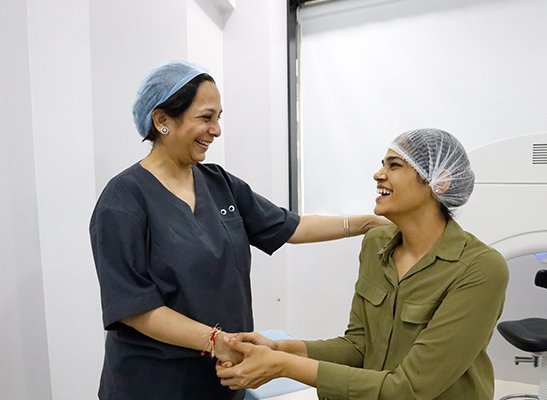For many cancer survivors, regaining a sense of confidence and normalcy after treatment is an important step in the healing process. A SMAS facelift can be a powerful way to restore facial vitality and reduce the signs of stress, weight loss, or aging accelerated by cancer treatments. However, planning a facelift after cancer requires careful timing and collaboration with your oncology team to ensure safety.
In this guide, we explore how survivors can safely pursue facial rejuvenation post-treatment, when it’s appropriate to consider a SMAS facelift, and what unique medical factors should be evaluated.
How Cancer and Its Treatment Affect the Face
Chemotherapy, radiation, and prolonged illness can accelerate facial aging through:
- Volume loss (fat and muscle wasting)
- Skin thinning or dryness
- Premature wrinkling
- Sagging from rapid weight changes
- Scarring or skin changes from radiation
These effects often lead to a tired or gaunt appearance that doesn’t match how survivors feel inside. A SMAS facelift, which lifts deeper facial tissues (not just the skin), can restore youthful contours and improve self-image.
When Is It Safe to Consider a Facelift After Cancer?
The ideal timing for facial rejuvenation post-treatment depends on several factors:
1. Time Since Active Treatment Ended
- Most plastic surgeons recommend waiting at least 6–12 months after completing chemotherapy or radiation.
- This allows the body time to rebuild strength, immunity, and normal wound healing capacity.
2. Oncologist Clearance
- Patients must be in remission or stable follow-up, with no active cancer.
- A letter from your oncologist or medical team confirming your readiness for elective surgery is often required.
3. Type of Cancer and Treatment
- Radiation to the head or neck may affect skin quality and vascularity, increasing the risk of wound healing issues.
- Hematologic cancers (like leukemia or lymphoma) may impact clotting and immune response, requiring more caution.
- Breast or gynecologic cancer survivors may not have direct facial effects but still need thorough assessment.
4. Overall Health and Immunity
- Blood counts, nutritional status, and energy levels should all be within a healthy range.
- Patients with residual fatigue, anemia, or immune suppression may need more time.
Surgical Risks and Considerations for Cancer Survivors
Cancer survivors may face some additional risks during facelift surgery, including:
- Delayed wound healing due to prior radiation or chemotherapy
- Higher infection risk if the immune system is not fully recovered
- Thinner, more fragile skin that requires a gentler surgical approach
- Emotional stress or anxiety surrounding surgery or recovery
However, with proper evaluation and careful planning, these risks can often be minimized.
Modifications to the Facelift Plan
Surgeons may adjust the facelift technique or recovery plan based on the patient’s history:
- Use of conservative lift techniques in areas previously treated with radiation
- Shorter surgical times to reduce stress on the body
- Staged procedures (e.g., facelift with fat grafting performed in separate sessions)
- Enhanced post-op care, including nutritional support and wound monitoring
What to Discuss With Your Surgeon
If you’re considering a facelift after cancer, be sure to review the following with your facial plastic surgeon:
- Your full cancer history (type, treatment dates, medications, side effects)
- Any lingering symptoms or changes in energy, immunity, or skin
- Emotional readiness and expectations for recovery
- Medications or supplements you’re still taking (e.g., hormone blockers, immune therapies)
Your surgeon should also communicate with your oncologist to ensure coordinated care.
Benefits Beyond Aesthetics
For many cancer survivors, a facelift is more than cosmetic—it’s a symbolic step toward reclaiming confidence, strength, and control. Patients often report feeling more emotionally uplifted, social, and aligned with their “pre-cancer” selves after facial rejuvenation.
Final Thoughts
A SMAS facelift after cancer is possible—and for many survivors, it’s deeply rewarding. The key to safe and successful facial rejuvenation post-treatment lies in:
- Careful timing after active therapy
- Coordination with your oncology team
- Selecting a board-certified surgeon experienced in working with medically complex patients
With the right plan in place, survivors can move forward not just with health—but with renewed beauty and confidence.




